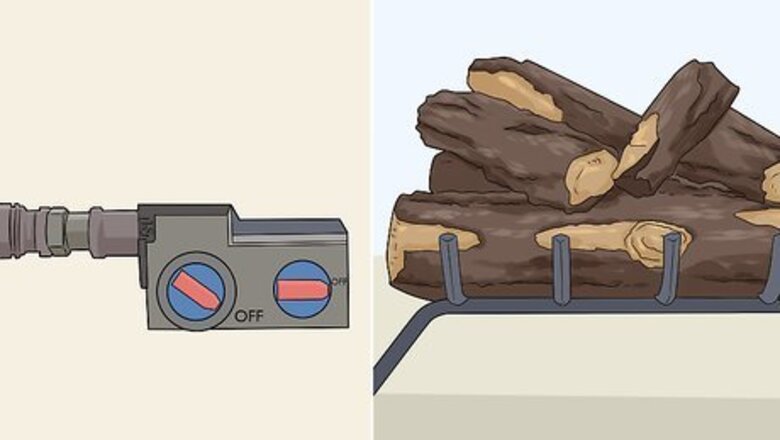
views
Removing the Logs
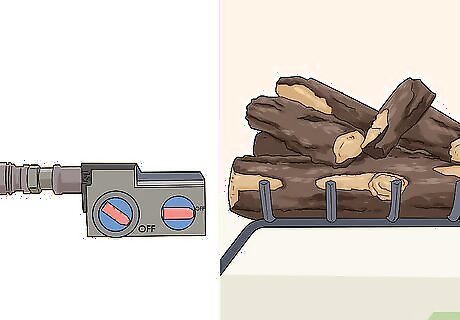
Turn off the pilot light. Locate the control valve on your gas log system. It is the dial you use to ignite the fireplace. Turn the dial to the "off" setting. The burner valve in the system will close, restricting gas flow and shutting off the flames.

Allow the logs to cool. The logs must only be handled when cool. Come back in an hour and move your hand over the front of the fireplace. Continue moving it into the unit as long as it does not feel hot.
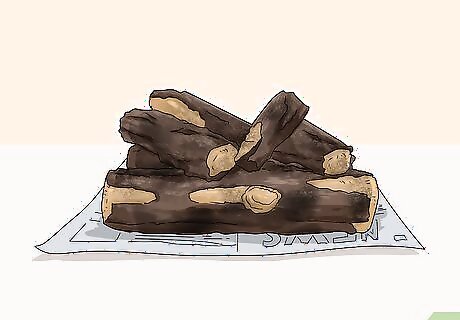
Place the logs on newspaper. When removing the logs from the fireplace, set them out on newspaper, scrap paper, an old bedsheet, or other protective surface set on the floor near you. Choose something that you won’t mind getting sooty. If you do not have the owner’s manual, take a picture of the log placement. Incorrect placement when you return the logs to the fireplace can void your warranty and lead to more soot. Inspect your logs for corrosion or damage when you remove them. If you notice any damage or blockage in the logs or fireplace, contact a professional to repair or replace them before using your fireplace again.
Cleaning the Logs
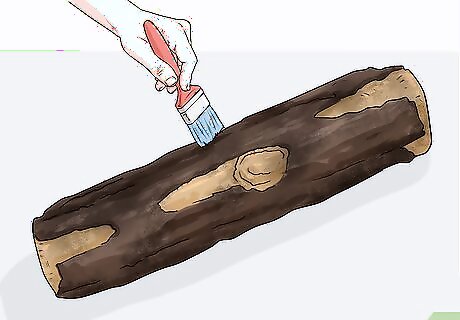
Scrub the logs. Once the logs are moved out of the fireplace, use a brush to remove the soot. A small paintbrush or nylon scrub brush will reach soot in the cracks of the logs. You do not need to dip the brushes in water. Another option for cleaning includes using a vacuum cleaner to lift the soot. Some vacuums also have soft brush attachments that you can use to dislodge soot stuck in the cracks. Avoid stiff scrubbers, lots of water, or harsh cleaners. These will chip or discolor the logs.
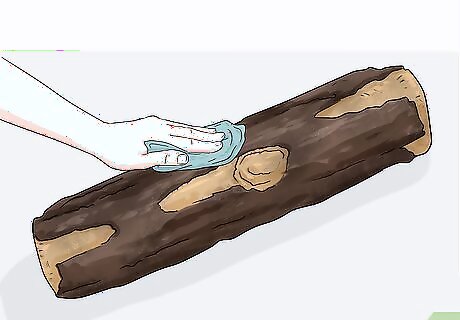
Wipe the logs with a rag. To remove soot still clinging to the logs, use a dry, soft rag. Wipe it over the whole log. The soot should brush off without exposing the logs to water or cleaner that could damage the logs or create more soot. Cleaners should only be used if they are approved in the owner’s manual.
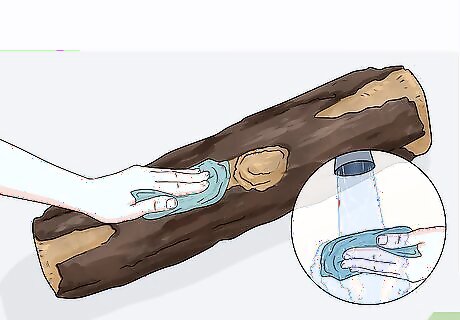
Clean the logs with a damp rag. If necessary, some logs can be treated with a small amount of water. Dip a soft cloth into lukewarm water, wringing out excess moisture. Wipe it over the logs to remove leftover soot. Check with your owner’s manual to make sure this treatment is okay. If you are unsure, test the rag in an inconspicuous place, such as the back side of one log, first. Use a soft-bristled paintbrush or cotton swab if soot is built up in small crevices.
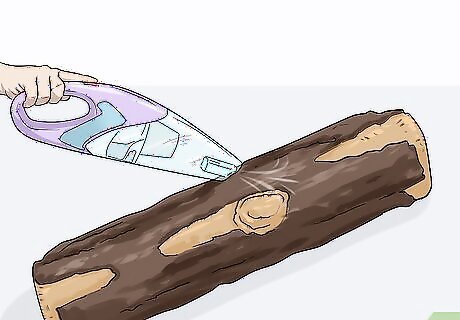
Vacuum up the soot. Run your vacuum cleaner around the logs to pick up any of the soot you brushed off. This will ensure that the soot doesn’t spread throughout your home. Once done, dispose of the paper when you are ready to return the logs to the fireplace.
Clearing Soot from the Fireplace
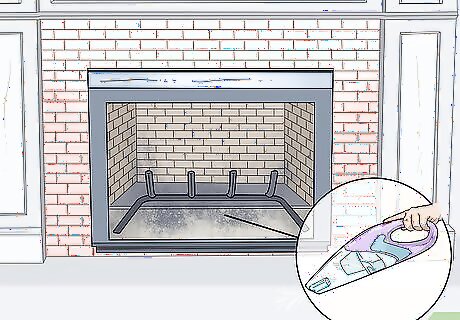
Vacuum the soot out of the fireplace. Use a vacuum with a hose to reach into the fireplace and remove the soot that has collected on the floor. This can be done anytime, even without removing the logs, to reduce the amount of soot collecting in the fireplace. Cover the end of your vacuum hose with cheesecloth if you have small lava rocks inside your fireplace. This prevents them from getting sucked up.
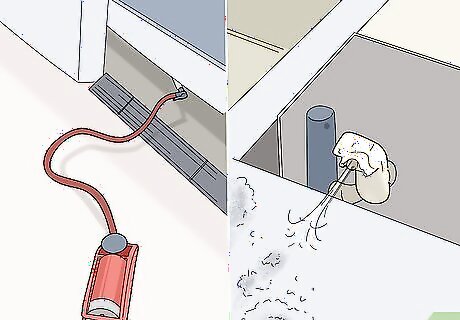
Clear the pilot light line of soot. Use a compressor or a can of air no greater than 30 PSI for this. Locate the pilot light, which is where the flame lights the burners. On it, right next to its tip, is an oxygen depletion sensor that has two small holes in it. Blast air through the holes to clear them out.

Blow the dust out of the main burner. Follow the gas tube on the ground as it goes into the burner where the logs sit. There will be a hole or gap in the tube near where it meets the burner. This is where air mixes with gas. Clear it out using the compressor or air.




















Comments
0 comment